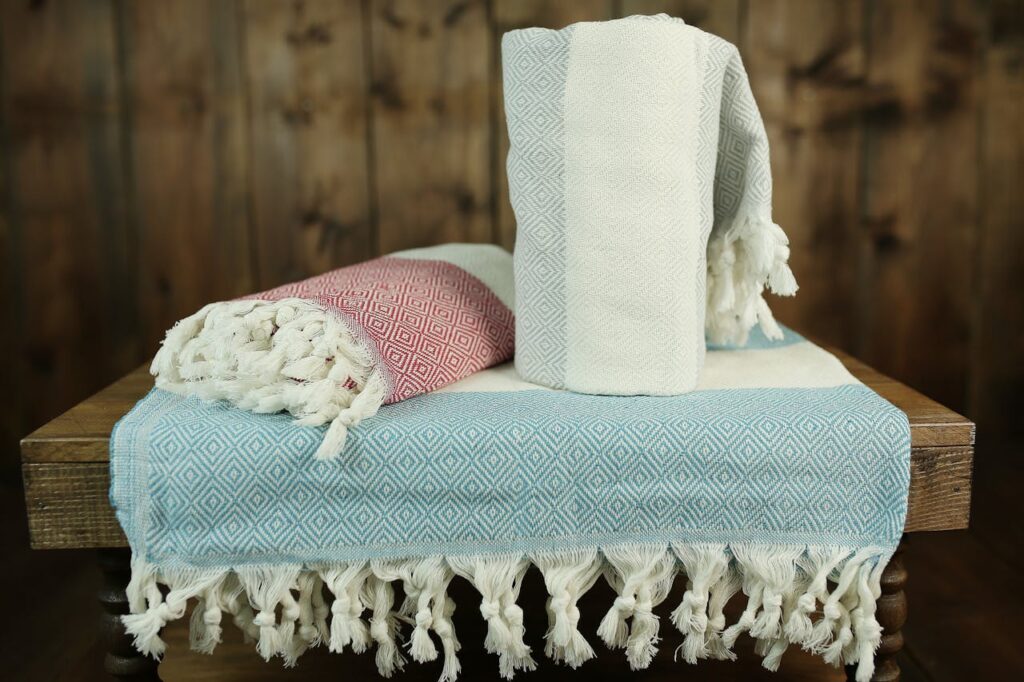When you think about your daily routine, towels probably don’t top your list of environmental concerns. But here’s the thing: traditional towels have a bigger impact on the planet than you might realize. From the resources used to make them to the waste they create, every step of their lifecycle leaves a mark. Let’s dive into how your fluffy bath towel might be affecting the Earth—and what you can do about it.
1. The Hidden Cost of Cotton
Cotton is the star ingredient in most traditional towels. But growing cotton isn’t as innocent as it seems. Did you know it takes about 2,700 liters of water to produce just one cotton towel? That’s enough water for one person to drink for nearly 3 years! On top of that, conventional cotton farming relies heavily on pesticides and chemicals. These not only harm the soil but also pollute nearby water sources. So, while your towel feels soft, its journey to your bathroom might not be so gentle on the planet.
2. The Energy-Draining Manufacturing Process
Once cotton is harvested, it goes through a resource-heavy manufacturing process. Turning raw cotton into soft, absorbent towels requires massive amounts of energy. Factories use electricity and water to spin, dye, and finish the fabric. Many of these processes release harmful chemicals into the air and water. Plus, the dyes used in colorful towels often contain toxins that can harm aquatic life. When you think about it, your towel’s vibrant color might come at a high environmental cost.
3. The Problem with Fast Fashion Towels
Traditional towels are often part of the fast fashion cycle. Brands produce them cheaply and quickly to meet demand. But this means they’re not built to last. Low-quality towels fray, thin out, and lose their absorbency after just a few washes. What happens next? You toss them out and buy new ones. This cycle of constant replacement creates tons of textile waste. In fact, the average person throws away about 70 pounds of clothing and textiles each year. Towels are a big part of that pile.
4. The Carbon Footprint of Your Towel
Let’s talk about transportation. Most traditional towels are made in countries with low labor costs, like India or China. Once produced, they’re shipped worldwide. This long journey adds to their carbon footprint. Trucks, ships, and planes emit greenhouse gases that contribute to climate change. So, even before your towel reaches your home, it’s already left a trail of emissions. It’s like your towel has been on a world tour—and not the eco-friendly kind.
5. The Afterlife of Your Towel
What happens when your towel reaches the end of its life? If you’re like most people, it probably ends up in a landfill. Traditional towels are often made from synthetic blends that don’t break down easily. They can sit in landfills for decades, releasing harmful chemicals as they decompose. Even if you donate old towels, not all of them find a second life. Many end up discarded anyway. It’s a sad ending for something that once brought you so much comfort.
6. How You Can Make a Difference
Now that you know the impact of traditional towels, you might be wondering what you can do. The good news is, small changes can make a big difference. Start by choosing eco-friendly options like organic cotton or bamboo towels. These materials use less water and fewer chemicals. Look for certifications like GOTS or OEKO-TEX® to ensure your towel is truly sustainable. And don’t forget to care for your towels properly. Washing them in cold water and air-drying can extend their lifespan. When it’s time to say goodbye, consider repurposing old towels as cleaning rags or pet bedding.
7. The Bigger Picture
Your towel choices might seem small, but they’re part of a bigger movement. By opting for sustainable towels, you’re supporting brands that prioritize the planet. You’re also sending a message to the industry: eco-friendly matters. Every time you choose a greener option, you’re helping reduce water waste, chemical pollution, and textile waste. It’s a simple step, but it adds up. Imagine if everyone made the switch—our planet would breathe a little easier.
8. Fun Fact: Towels Can Be Heroes Too
Here’s a fun thought: your towel can be a hero for the environment. Eco-friendly towels are designed to last longer, absorb better, and dry faster. They’re like the superheroes of the bathroom world. And the best part? They don’t cost the Earth. By choosing sustainable options, you’re not just getting a great towel—you’re making a positive impact. So, next time you wrap yourself in a cozy towel, remember: you’re part of the solution.
9. A Quick Recap
Let’s sum it up. Traditional towels use tons of water, energy, and chemicals. They contribute to pollution, waste, and climate change. But you have the power to change that. By choosing eco-friendly towels, you can reduce your environmental footprint. It’s a small change with a big impact. And who knows? Your towel might just inspire others to make greener choices too.
10. Your Next Steps
Ready to make the switch? Start by researching sustainable towel brands. Look for materials like organic cotton, bamboo, or hemp. Check for certifications that guarantee eco-friendly practices. And don’t forget to care for your towels to make them last. Every step you take brings us closer to a healthier planet. So, go ahead—treat yourself to a towel that’s as kind to the Earth as it is to your skin.
There you have it! The environmental impact of traditional towels might surprise you, but now you know how to make better choices. Your bathroom routine just got a whole lot greener.

